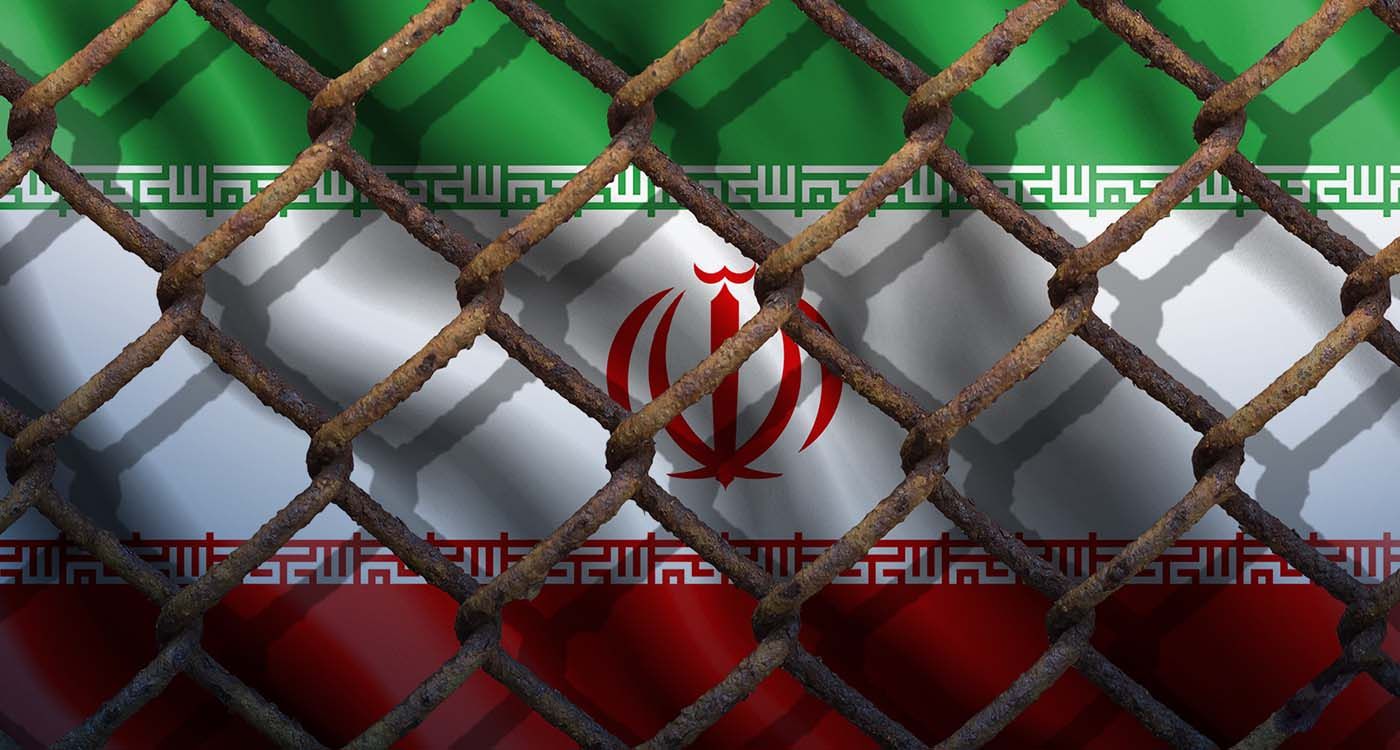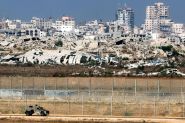- Home
- Highlights
- How Much Do Iran’s Proxies Really Cost?

©Shutterstock
A US Treasury delegation has begun a series of meetings in Beirut with the Central Bank, several commercial banks, and government officials. The mission’s goal is straightforward: to assess how effectively sanctions meant to curb Hezbollah’s financing are being enforced on the ground.
This timing of the visit is significant. On September 22, US Middle East envoy Tom Barrack told Sky News that Hezbollah continues to receive nearly $60 million per month from Iran. For Washington, this raises urgent questions: through which channels do these funds flow? Beirut’s port, the airport, or the Syrian border? And perhaps more importantly, how can a financial stream that has long defied oversight finally be contained?
The issue, however, extends far beyond Lebanon. At its core lies a broader question: the true cost of Tehran’s support for its regional proxies, a network of some 200,000 fighters across Lebanon, Iraq, Syria, and Yemen. Every year, Iran sustains a vast military and political apparatus worth several billions of dollars.
It is this intricate system—its budgets, financial conduits, and hidden costs—that This is Beirut now seeks to unravel.
Counting the Billions: A Closer Look at Iran’s Proxy Spending
Iran maintains one of the largest military forces in the Middle East. According to The Military Balance (February 2025), Iran’s armed forces number roughly 610,000 active personnel, including 350,000 in the Artesh (regular army), 190,000 in the Islamic Revolutionary Guard Corps (IRGC), and around 200,000 fighters within its network of regional proxies. This total far exceeds that of Egypt (438,500) and Saudi Arabia (257,000).
Salaries, weapons, logistics, and clandestine networks come with a steep price tag, though precise figures are hard to pin down. Available data, however, offer a credible picture: billions of dollars spent over the past decade, financed through a mix of public revenues, IRGC-controlled assets, and off-the-books funding channels that circumvent the international financial system. To grasp the scale of Tehran’s ambitions, one must look at how its military budget has evolved.
According to the US State Department, Iran spent around $16 billion on the so-called “Axis of Resistance” between 2012 and 2018.
Following the 2015 nuclear deal (JCPOA) and until Washington’s withdrawal from it in 2018, Iran’s official defense budget grew by roughly 40%, a rise short-lived, however, as renewed sanctions soon forced spending down, from $27.3 billion in 2018 to $20.7 billion in 2019, illustrating the direct impact of sanctions on Tehran’s ability to fund its allies.
The October 7, 2023 Hamas attack on Israel reignited regional conflict, triggering mobilization among all of Iran’s proxies. In 2024, Iran’s official defense budget was estimated at $8.04 billion. By 2025, seeking to “regain momentum,” Tehran announced plans to triple its defense spending, a 200% increase year over year. In practical terms, that means a leap from about $8 billion to more than $24 billion, possibly more if undisclosed components are included.
Hezbollah alone reportedly continues to receive about $700 million annually from Tehran, consistent with US envoy Tom Barrack’s estimate of $60 million per month. In Gaza, Hamas is believed to receive roughly $80 million per year, while Palestinian Islamic Jihad receives around $70 million. In 2015, Syria was allocated a staggering $6 billion in Iranian support, during the height of Bashar al-Assad’s power.
These expenditures cover a wide range of expenses: weapons transfers, training, salaries and pensions for foreign fighters, financial aid to families of “martyrs,” ammunition supply, equipment maintenance, construction of logistical infrastructure, and social services including schools and stipends.
Recruitment and Training
Training costs vary widely depending on the role. Basic local training can be relatively inexpensive, but specialized programs, covering rocket and drone operations, explosive‑device engineering, and urban warfare, require costly instructors, facilities and equipment. Estimates point to hundreds of millions of dollars spent over several years for regional intensive training programs. “You should budget between $50 million and $400 million for fighter training and related exercises,” an expert told This is Beirut.
Logistics and Local Infrastructures
Logistics—transporting arms and spare parts, maintaining equipment, operating command centers and securing land and sea supply corridors—represents one of the largest and most enduring expense lines. These networks, documented in both overland and clandestine maritime routes, rely on a fleet of “ghost” tankers and a web of maritime intermediaries to evade sanctions. Direct, recurring costs for maintaining these logistics channels are estimated at $200 million to $1.2 billion annually.
Arms and Ammunitions
The transfer or local production of weapons—missiles, rockets, drones, and explosives—represents a major budgetary commitment. Even “low‑tech” munitions add up quickly when a sustained rearmament effort is underway.
Recent reporting on 2025 operations illustrates how costs soar during periods of escalation, when strikes, rocket exchanges, and arsenal replenishment become routine.
For example, Tehran reportedly spent roughly $49 million to execute a single combined drone‑and‑missile strike against Israeli territory during the recent war that followed the October 7, 2023 offensive. That total is based on unit‑cost estimates: 170 drones at about $35,000 each, 30 cruise missiles at roughly $1 million apiece, and 120 ballistic missiles at about $110,000 each — a combined cost of approximately $49.15 million.
When exchanges are repeated and stockpiles rebuilt, annual arms and ammunition costs can swell dramatically, with sources estimating yearly expenditures between $300 million and $1.5 billion depending on the scale of operations and types of systems used.
Salaries, Stipends and Social Assistance
To secure loyalty and stability, Iran finances salaries, pensions, and direct aid to fighters and their families across its zones of influence. These transfers are often regular, monthly stipends or pensions, and represent a recurring cost on top of one‑off military expenditures. Estimates for these recurrent payments typically range from $100 million to $600 million annually.
Beyond direct payments, Tehran also funds local reconstruction projects, humanitarian assistance and proxy‑run NGOs that provide services and build popular support. Those programs are sizable: analysts put spending on reconstruction and social‑welfare projects between $50 million and $500 million per year.
Peripheral Services
Iran’s support for its proxy networks extends beyond the battlefield, encompassing localized reconstruction and economic investment programs aimed at strengthening the political foothold of allied groups. Depending on the scale of these projects, expenditures can reach hundreds of millions of dollars annually.
Funds are also channeled through intermediaries, shell companies, and covert transfer mechanisms to sustain parallel logistics networks. Estimates place the cost of these arrangements between $50 million and $400 million per year.
When combined with operational spending on training, arms, and salaries, these peripheral expenses push the total annual outlay for Iran’s proxy apparatus into a plausible range of $750 million to $4.6 billion, potentially higher during periods of intensified conflict.
However, some analysts cast doubt on Iran’s ability to sustain such levels over the long term, given the impact of sanctions, internal budgetary constraints, and structural limitations of its economy.
Tracing Iran’s Foreign Operations Funding
The financial lifelines fueling Iran’s overseas operations are as complex as they are opaque.
A substantial portion of Iran’s foreign operations funding originates from the national budget, with funds particularly earmarked for the Islamic Revolutionary Guard Corps (IRGC) and its elite Qods Force. Those units benefit from direct budgetary lines and in-kind transfers, and recent increases in military spending have widened their operational leeway.
Iran’s oil exports, though heavily sanctioned, remain a vital source of income. The regime relies on clandestine methods, such as “ghost fleets” that obscure ship identities, to sell oil abroad. Proceeds from these sales are funneled into military and proxy operations, while bypassing formal financial systems.
Beyond state funding, the IRGC controls a sprawling network of businesses across sectors like construction, maritime transport, import-export, and parallel banking systems. Profits from these enterprises sustain Iran’s defense logistics and foreign campaigns, effectively creating a parallel economy under military control.
Investigations have uncovered sophisticated laundering schemes involving shell companies, informal exchange houses, and intermediaries based in Asia and the Middle East. These structures channel fund transfers to regional allies and proxies, often through shadow banking systems designed to evade detection.
To those sources are added episodic donations and grassroots fundraising by sympathetic groups, hard to quantify but significant in their opacity.
These diverse revenue streams are then channeled abroad by Tehran. The question that naturally follows is: how exactly does the regime move the money abroad and keep it flowing under pressure from sanctions and scrutiny?
Tracking the Flow: Who Decides and How Funds Move
Operational decisions largely rest with the IRGC’s Quds Force, the unit tasked with Iran’s projection of power abroad. From there, financial flows are carefully “fragmented”: central transfers are routed to regional logistical hubs in Iraq, Syria, and Lebanon, before being redistributed locally via intermediaries, “collectors,” and sometimes charitable or associative structures that are effectively co-opted for operational purposes. Client states or militias rarely receive cash directly; aid typically comes in kind: missiles, spare parts, or instructors. Independent public audits are virtually nonexistent, and transparency is minimal, making it difficult to determine exactly how much reaches each recipient.
Backing a network of proxies is far more than a military expenditure. Every dollar is strategically calculated to extend Tehran’s long-term regional influence across Lebanon, Syria, Iraq, and Yemen while enhancing its regional projection capabilities.
Yet this strategy, costly and heavily reliant on fragile financial flows and sanctions circumvention, underscores the structural weaknesses of Iran’s economy and raises questions about its long-term sustainability. Sustaining such a network is as much a political and economic gamble as a military one, a bet that could weigh heavily on Iran’s public finances and internal stability. For now, the US Treasury delegation’s current tour in Lebanon remains a development to watch closely.
Read more





Comments